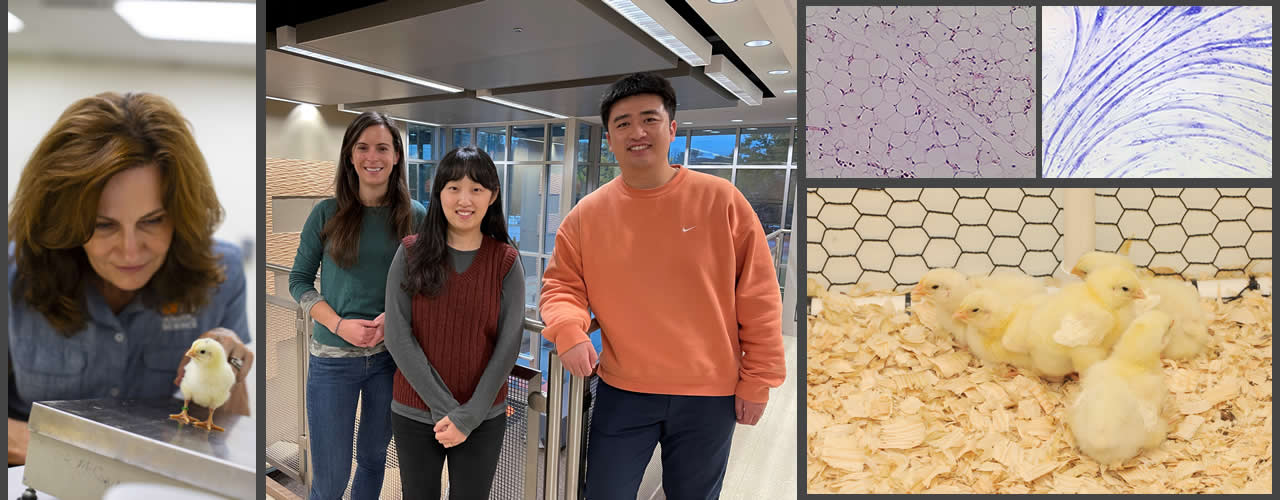
Animal Science has four key areas of research, Animal Health and Well-Being, Genetics and Genomics, Nutrition Physiology and Reproductive Physiology. Today we are highlighting a lab in the Nutrition Physiology area. Brynn Voy, Professor and Interim Department Head for Nutrition, focusing in Adipocyte development and obesity will share her lab with us.
Questions
What kind of work does your research group conduct?
Our lab conducts fundamental research related to development and metabolism of adipocytes. We use broiler chicks as a dual purpose model that allows to simultaneously address questions that are relevant to both poultry production and childhood obesity. With regard to poultry, our work seeks to identify ways to reduce the deposition of excess body fat, which wastes feed and, in broiler breeders, compromises production and fertility. At the same time, we use broiler chicks as model organism that allows us to ask unique questions about early adipose development and how it contributes to the risk of childhood obesity. Our lab works at the intersection of ‘omics, nutrition, and physiology, with an emphasis on using dietary fatty acids early in life to shape adipose development in a way that improves body composition. We are particularly focused on exploring how certain types of fatty acids influence the fate decisions and adipogenic potential of stem cells.
What led you to your research?
Certainly not a direct path! My goal after earning my BS was a career in zoo management. After working in a zoo and realizing the limited numbers of such opportunities, I made my way to graduate school and fell in love with physiology. I landed in adipocyte biology by pure serendipity – my initial advisor had a midlife crisis and, let’s just say, was no longer a suitable mentor. The only faculty member in the Physiology program who needed a student was a new professor who worked on obesity. The timing was great, as adipocytes were coming into their own as a fascinating but poorly understood cell type, and I was hooked. When I joined the Animal Science Department after many years at ORNL, the one requirement was to develop a research program using an agricultural model instead of mice. Conveniently, broilers are genetically prone to obesity and in many ways are better than rodents as an animal model for studies of human obesity. This is especially true for questions related to early life diet and adipose development, which is at the heart of my research program.
Where do you see your field in 10 years?
I suspect that we will be asking new questions about broiler development, as the ongoing process of genetic improvement seems to invariably produce unintended physiological consequences that need to be understood. I would love to think that, with respect to childhood obesity, we will have a much better understanding of the long term impact of the maternal diet on obesity risk in offspring.
Who are your lab members?
Research Associate:
Dr. Elizabeth Shepherd
PhD students:
Minjeong Kim
Usuk Jung